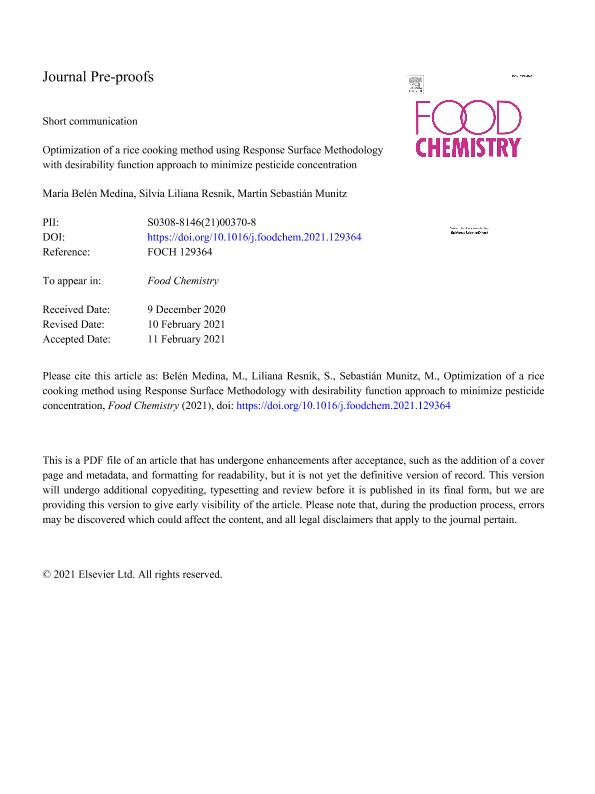Artículo
Optimization of a rice cooking method using response surface methodology with desirability function approach to minimize pesticide concentration
Fecha de publicación:
01/08/2021
Editorial:
Elsevier
Revista:
Food Chemistry
ISSN:
0308-8146
Idioma:
Inglés
Tipo de recurso:
Artículo publicado
Clasificación temática:
Resumen
Rice is contaminated with pesticides applied in pre and post-harvest. These contaminations could be reduced through household operations like washing and cooking. Therefore, in the present research, a pre-soaking rice cooking method was used to reduce pesticides residues. Response Surface Methodology with Central Composite Design was applied to minimize pesticides concentration by choosing the best soaking time and water:rice grain relation before cooking. A quadratic polynomial equation was obtained. Desirability function approach gave the optimal cooking conditions as 14 h soaking time and water:rice grain relation of 3. This process allowed a pesticide elimination of 100.0 %, 93.5 %, 98.4 %, 98.5 %, 99.0 %, and 95.0 %, of azoxystrobin, cyproconazole, deltamethrin, epoxiconazole, kresoxim-methyl and penconazole, respectively.
Archivos asociados
Licencia
Identificadores
Colecciones
Articulos(SEDE CENTRAL)
Articulos de SEDE CENTRAL
Articulos de SEDE CENTRAL
Citación
Medina, María Belén; Resnik, Silvia Liliana; Munitz, Martín Sebastián; Optimization of a rice cooking method using response surface methodology with desirability function approach to minimize pesticide concentration; Elsevier; Food Chemistry; 352; 129364; 1-8-2021; 1-5
Compartir
Altmétricas




